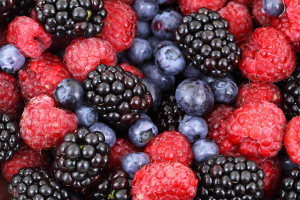
I’m sure you are thinking I’m here to tell you about some New Year’s diet resolution or something you should be doing better this year. Nope. You know what’s been on my mind this holiday season? GLUTEN. Let me explain.
Christmas brioche buns!
Strangely as an RD I’m not much of a cook. Well, I can “cook,” but it’s nothing fancy. It’s healthy sure, but no one is winning James Beard awards over here. What I do love is baking.
I don’t know why I like baking. It’d tedious, time consuming, and finicky. It is also inherently unhealthy if not consumed in moderation. But it’s so satisfying. Having something you babied over hours pop out of the oven, puffy and steaming, warms my heart. Come to think of it, I’ve always loved arts and crafts, so maybe it’s like that. It’s a project that comes together in not only a (hopefully) beautiful manner but also a delicious one.
Seriously though, people will give me the side eye when I, a dietitian, talk about making cinnamon rolls or banana bread with flour and…gasp….sugar. Apparently my life should not include any indulgences. Believe me, I’ve spent my time in gluten-free, dairy-free, fun-free land (joking!), along with alternative sweeteners, etc, but this year I’m coming back ‘round on the wonder that is gluten.
Why gluten? It’s properties are simply magical, that’s all. When the wheat proteins glutenin and gliadin come together with liquid, they form a net or lattice of sorts that when baked, trap the gasses produced by yeast or other leaveners and cause the product to rise. While non-gluten flours can rise somewhat, they cannot replicate the soft, almost spongy texture that gluten provides.
I do understand the downsides to gluten, however. A surprisingly large number of people have sensitivities or even autoimmune reactions to gluten. And there’s the issue of refined flour, the type most often used, which offers little nutritive value and is highly glycemic.
Those who are sensitive to gluten should certainly avoid it, at least for a time while working on overall gut health. Anyone with diabetes or blood sugar irregularities should consume any type of food with flour and sugar with extreme caution.
If not sensitive or otherwise allergic, gluten should still be consumed in moderation. My general feeling is it should not be an everyday food, much like it is now unfortunately. Think about it. Toast with breakfast. Sandwich for lunch. Breaded fish for dinner. A little cookie for dessert. Gluten, gluten, gluten, gluten. If you don’t already, purposely plan some gluten free days and limit your gluten to no more than 1 or 2 choices per day max.
Quality and type of glutenous grain should matter as well. While I agree that white all-purpose flour tends to make the most beautiful baked products, whole wheat flours can work just as well. Branch out and try using other glutenous flours such as spelt, rye, kamut, einkhorn…..
All this to say, gluten grains CAN be a part of a diet in moderation. Whole grains are best, but there’s no reason not to have fun with white flours from time to time, especially when you want something purely indulgent or even just for aesthetic reasons.

Blueberry Spelt muffins
You know what I did today? I made spelt blueberry muffins. I have been working through recipes from a new book on my shelf, Mother Grains by Roxan Jullapat. I also have a white bread proofing that I’m hoping to bake tomorrow. More pics below from some of my other fun projects this holiday season.
So what is my New Year’s message then? Make this year about moderation. Wanna bake but feel guilty? Stop it. Set aside some “me” time and do it. Venture out with some healthier whole grain versions or simply indulge in something you’ve missed.


